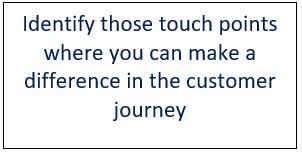In a recent podcast with Tim Parry of Bricks and Clicks, I had the opportunity to share my thoughts on the state of retail, beginning with the shift in shopping habits of the sporting goods sector. The simple fact is that although the space has always been challenged by big players such as Dick’s, Bass Pro Shops and, of course, Amazon, the sector is moving online later than most other segments due to the nature of the products. Trust in climbing gear, the desire to try on the newest, best footwear, and the bulky size of things like boats and weights keeps shoppers wanting to come to stores. But as big a challenge, has been the ability of these retailers to keep the store experience compelling.
Despite the challenges today retailers face, the National Retail Federation forecasts a 3.7% to 4.3% uptick for 2017, Parry asked “Will we see consumers hit the stores once again?”
Quite simply, the death of the store has been exaggerated in the current state of retail. The country is over-stored, but the nature of the store is changing. Today’s successful retailers are focusing on their advantages over online shopping in offering experiences that can’t be delivered through a digital-only experience.
Many big box stores have been challenged of late, their struggles are real, complicated, and existential. Last century these same retailers won by leveraging their most valuable assets – massive real estate investments, a vast array of other companies’ brands; and a rich legacy of their own. And today, they’re losing to comp
etitors specifically because of these same reasons. The key to getting shoppers back into their stores is a combination of losing the worst parts of these traits and leveraging the best.
and leveraging the best.
Be omnichannel. Stores were a competitive advantage and will be again, but only good stores. The short-term strategy of chasing comp-store metrics by opening new stores in questionable locations just won’t fly in the long term. Amazon, Google, Warby Parker, and Bonobos are all opening stores. The key is doing it right. Right is omnichannel. Stores are one of many touch points in the customer journey. Identify those touch points where you can make a difference in the customer journey. And right is making the customers’ experiences in a store a meaningful part of the journey.
Be partners. Other companies’ brands aren’t necessarily bad. In fact, Amazon was built on the idea. They are just now starting to capitalize on private labels just like the many successful stores always have. Amazon and the other marketplaces, for all that brands hate about them, have done a better job  in partnering. It’s time to get back onboard and work aggressively to find win-win opportunities.
in partnering. It’s time to get back onboard and work aggressively to find win-win opportunities.
Be agile. This is where legacy can kill a company. Working with hundreds of retailers on thousands of projects, at Sophelle we’ve found that the clearest predictor of success is their ability to innovate and test. It’s not just innovation. We’ve seen hubris cause large companies to think they’re smart enough and rich enough to get innovation right with just one swing. That doesn’t seem to be the case. What we’ve seen win is a constant challenging of the status quo and the sincere desire and ability to test the new ideas.
Sporting goods stores are not dead, but those that are not willing and able to lead the path of change will close their doors. At Sophelle we have helped hundreds of clients from emerging retailers to the Fortune 100, succeed by delivering compelling customer experience at key touch points throughout the customer journey through our strategy, selection, implementation, and support services. To hear more of my podcast, click here.
Contributed by Doug Weich




